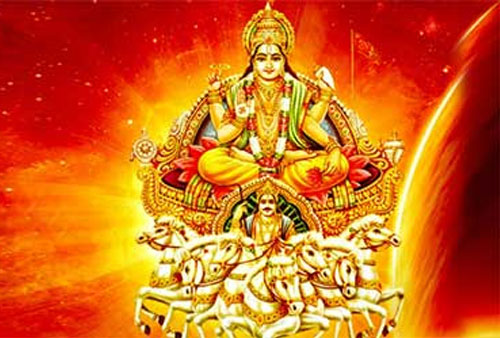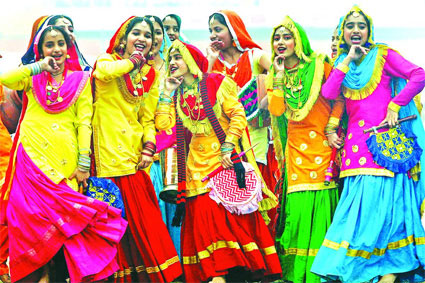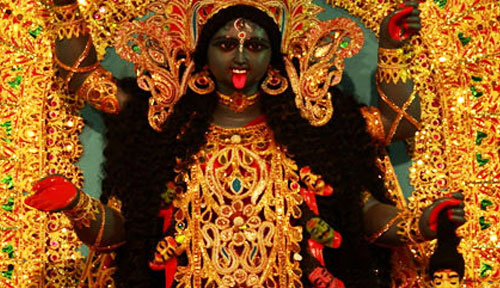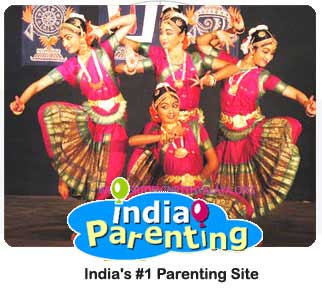Celebrating Makar Sankranti is incomplete without Makar Sankranti Puja. Find out the preparations for the Makar Sankranti Puja and the rituals followed while performing this Puja. Makar Sankranti is celebrated as a harvest festival in India that also marks the transition of the sun from the Sagittarius to the Capricorn or the Makar Rasi. According to the Hindu calendar Makar Sankranti marks the commencement of Uttarayan, where the subsequent period of six months is believed to be extremely auspicious as the day-time during this period belongs to the Devas or the Gods. It is also a solstice whence the days begin to be longer and the nights become shorter. All the rituals and Pujas performed during Makar Sankranti are dedicated to the Sun God or Lord Surya. It usually falls on the 14th of January every year. In this articleThe Belief and Eminence of Makar SankrantiPreparations for the Makar Sankranti PujaIngredients Required for a Traditional PujaHow is the Puja Performed?The Belief and Eminence of Makar Sankranti It is a long standing belief that all the Hindu Gods and Goddesses or the Devtas and the Devis acquire human form and roam on the face of the earth near the holy Sangam of the Ganga, Yamuna and Saraswati. They take a dip in the holy waters of the Sangam and that is why people flock to this confluence to take a holy dip and it is believed that they get absolved of all their sins if they take a dip in this auspicious period. Preparations for the Makar Sankranti Puja The preparations for the Makar Sankranti Puja takes place in Hindu houses in the following way. People start cleaning the entire house and especially the Puja room or area.On the day of Makar Sankranti, the person who performs the Puja in the house along with the other members takes an oil bath in the early morning.The house is beautifully decorated with Rangolis particularly at the entrance and a garland of flowers and mango leaves is hanged in the doorways.An idol or picture of the Lord Surya is placed on a high platform in the Puja room.Ingredients Required for a Traditional Puja Following are the ingredients used for a traditional Makar Sankranti Puja. FlowersCoconutLampsHoly water of the GangesBetel nuts and leavesAkshata – a mix of turmeric powder and rice powderA mix of sesame seeds and jaggery, that is, offered as the PradsadamEllu Bella or sugarcane, which is also a part of the ritualistic offering that is offered to the Sun God. Naivedyas or offering to the Deity requires Baayna, where Teo Ghevars, four laddoos mades from black Til or sesame seeds, four Laddoos made from white Til and some coins or money is placed on a Thaali. You may include another Thaali that has Boondi Laddoos which are made from Besan or gramflour and sugar syrup, Naaljodi and a bowl of clarified butter. It is also a customary ritual to send this Baayna to the sister or daughter who has been married and resides nearby. How is the Puja Performed? The focus is on how the Baayna is created and placed before the idol or image of Lord Surya. The Thaali where you place the Ghevras and the four plus four black and white Til Laddoos and money is very important. There are variations in rituals that is, the manner in which these are placed and presented, but usually people sprinkle some rice and Roli on the Baayna. This mix of Roli and rice flour is also applied as a tilak before you sit for the Puja as a purification act. The heads must be covered with the end of your Saree or Dupatta and you are required to rotate them four times over the Baayna. Post Puja, this Baayna is now presented to the sister, sister-in-law, daughter, or daughter-in-law, who is married. Else they can also be offered to the Brahmins. Makar Sankranti is essentially a very family festival which is observed with utmost sincerity. Another interesting aspect is that the Brahmins are invited for a meal and are offered some necessities of life like blankets, torches, fans, utensils and even thermos flasks. They ought to be fourteen in number.
Celebrating Makar Sankranti is incomplete without Makar Sankranti Puja. Find out the preparations for the Makar Sankranti Puja and the rituals followed while performing this Puja. Makar Sankranti is celebrated as a harvest festival in India that also marks the transition of the sun from the Sagittarius to the
Capricorn or the
Makar Rasi. According to the Hindu calendar Makar Sankranti marks the commencement of Uttarayan, where the subsequent period of six months is believed to be extremely auspicious as the day-time during this period belongs to the Devas or the Gods. It is also a solstice whence the days begin to be longer and the nights become shorter. All the rituals and Pujas performed during
Makar Sankranti are dedicated to the Sun God or Lord Surya. It usually falls on the 14
th of January every year.
The Belief and Eminence of Makar Sankranti
It is a long standing belief that all the Hindu Gods and Goddesses or the Devtas and the Devis acquire human form and roam on the face of the earth near the holy Sangam of the Ganga, Yamuna and Saraswati. They take a dip in the holy waters of the Sangam and that is why people flock to this confluence to take a holy dip and it is believed that they get absolved of all their sins if they take a dip in this auspicious period.
Preparations for the Makar Sankranti Puja
The preparations for the Makar Sankranti Puja takes place in Hindu houses in the following way.
- People start cleaning the entire house and especially the Puja room or area.
- On the day of Makar Sankranti, the person who performs the Puja in the house along with the other members takes an oil bath in the early morning.
- The house is beautifully decorated with Rangolis particularly at the entrance and a garland of flowers and mango leaves is hanged in the doorways.
- An idol or picture of the Lord Surya is placed on a high platform in the Puja room.
Ingredients Required for a Traditional Puja
Following are the ingredients used for a traditional Makar Sankranti Puja.
- Flowers
- Coconut
- Lamps
- Holy water of the Ganges
- Betel nuts and leaves
- Akshata – a mix of turmeric powder and rice powder
- A mix of sesame seeds and jaggery, that is, offered as the Pradsadam
- Ellu Bella or sugarcane, which is also a part of the ritualistic offering that is offered to the Sun God.
Naivedyas or offering to the Deity requires Baayna, where Teo Ghevars, four laddoos mades from black Til or sesame seeds, four Laddoos made from white Til and some coins or money is placed on a Thaali. You may include another Thaali that has Boondi Laddoos which are made from Besan or gramflour and sugar syrup, Naaljodi and a bowl of clarified butter.
It is also a customary ritual to send this Baayna to the sister or daughter who has been married and resides nearby.
The focus is on how the Baayna is created and placed before the idol or image of Lord Surya. The Thaali where you place the Ghevras and the four plus four black and white Til Laddoos and money is very important. There are variations in rituals that is, the manner in which these are placed and presented, but usually people sprinkle some rice and Roli on the Baayna. This mix of Roli and rice flour is also applied as a tilak before you sit for the Puja as a purification act. The heads must be covered with the end of your Saree or Dupatta and you are required to rotate them four times over the Baayna. Post Puja, this Baayna is now presented to the sister, sister-in-law, daughter, or daughter-in-law, who is married. Else they can also be offered to the Brahmins.
Makar Sankranti is essentially a very family festival which is observed with utmost sincerity. Another interesting aspect is that the Brahmins are invited for a meal and are offered some necessities of life like blankets, torches, fans, utensils and even thermos flasks. They ought to be fourteen in number.

































